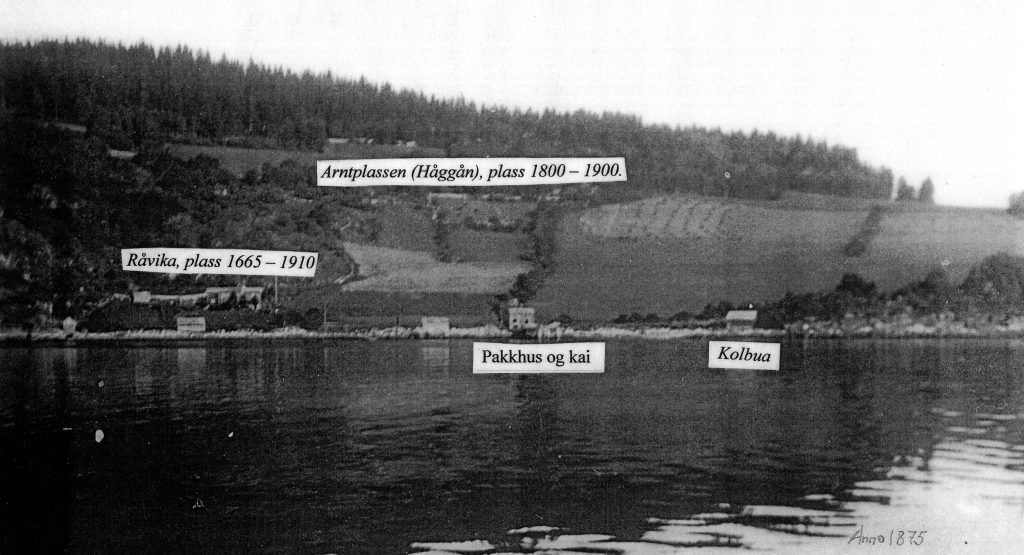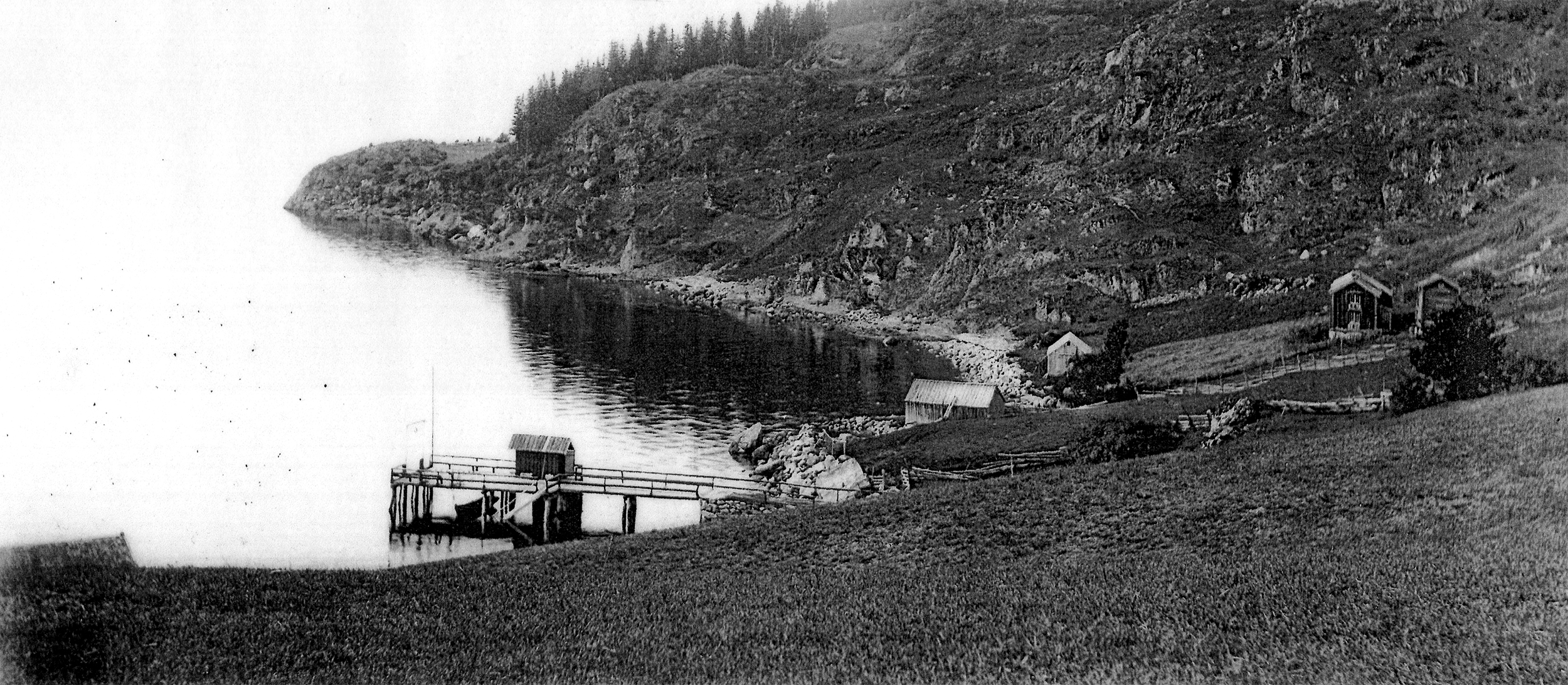On the seashore you can see the stone wall which is the last remnant of the quay that was built here by Jørgen Richter after he came to Rostad in 1823 (He took over the farm in 1826 from his father in-law Ole J. Rostad).
Regular boat-service
On the seashore you can see the stone wall which is the last remnant of the quay that was built here by Jørgen Richter after he came to Rostad in 1823 (He took over the farm in 1826 from his father in-law Ole J. Rostad).
On the fjord, scheduled traffic with calls to the quay started, and there were also frequent calls with both freight and passenger traffic from Trondheim, Levanger, and elsewhere. The water way was at the time the “main road” to Rostad before motorised traffic over land was relevant.
the quay was used to route traffic until approximately 1950. While the brickworks at Rostad were still in operation, a lot of wood was used. Thus, the forest was also cut down, and for a long time Rostad was heated with coal. Especially after it became an orphanage. To the east of the quay, a house was built which served as a coal store (“Kolbua”). Boat loads of coal came in the summer. The coal was stored here, and driven to the farm in winter.
The coal hut was 30 meters further north of the quay. When the coal came to Rostad by boat in the summer, it was driven in a “buggy” to the coal hut. In the winter, the coal was transported to the farm with a sledge.

The Rostadsjøen lake with the quay approx. 1855 The picture is from approx. 1875 Notice the packhouse and the coal hut A bathhouse was built in the pack house after Rostad became an orphanage in 1902. The quay was in use until approx. 1950
Opposite the quay there was a bathhouse. Water was pumped up from the sea and warmed up in the bathhouse. The stove in the bathhouse was in use both in summer and winter.
The Richter-oak
At Råvika, at the Rostad side of the fence, The Richter-oak stands where Ole Richter planted it as a 12-year-old in 1841.

